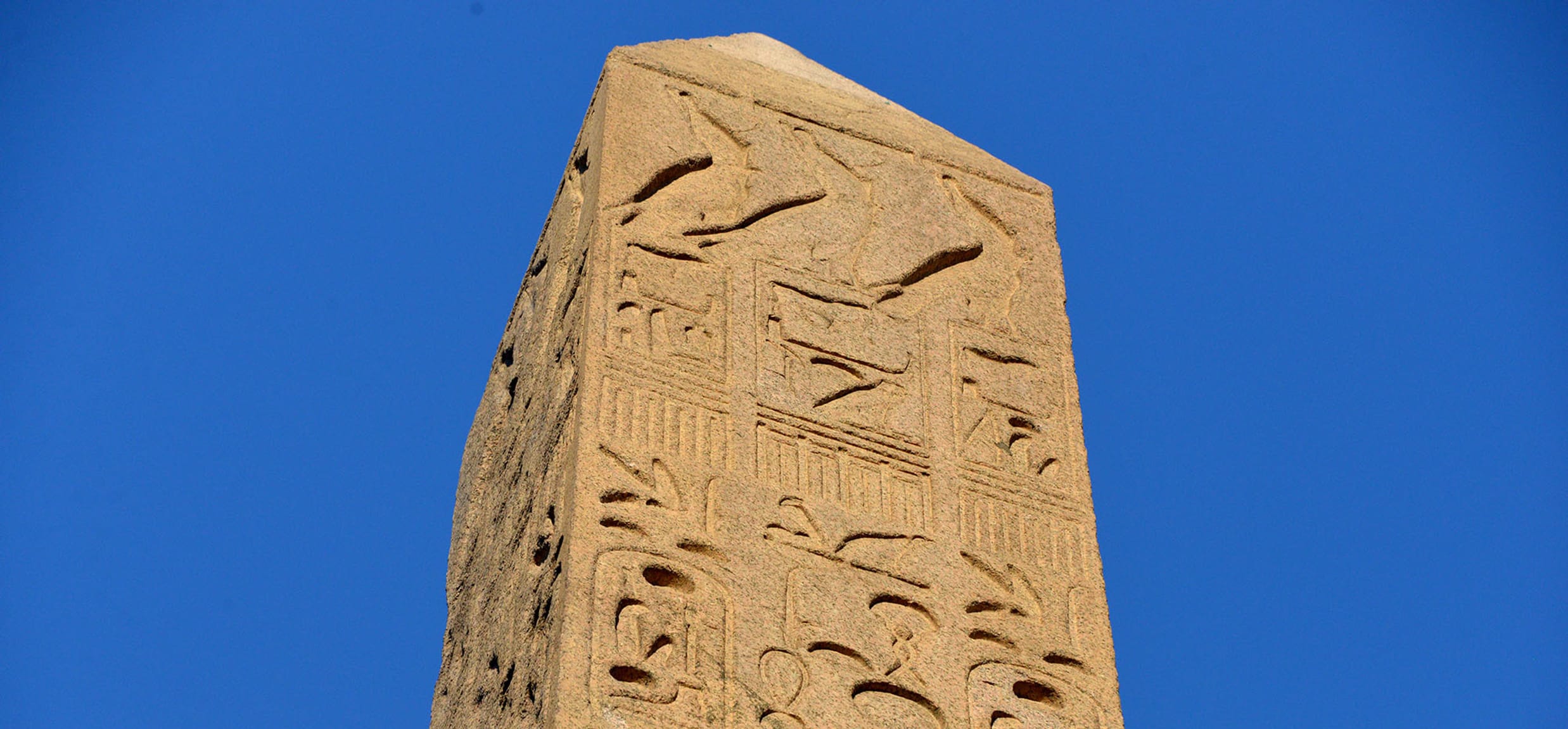Magazine
How the Obelisk Made Its Home in Central Park

The Obelisk, also known as Cleopatra's Needle, arrived in Central Park more than 130 years ago. Standing between the Great Lawn and the Metropolitan Museum of Art, the Obelisk is the oldest outdoor monument in New York City and the oldest man-made object in Central Park. The Obelisk's history is rich and interesting, but one of the most fascinating parts of its story is its journey from Egypt to Central Park.

The Obelisk, also known as Cleopatra's Needle, was created roughly 3,500 years ago, making it the oldest man-made object in Central Park and the oldest outdoor monument in New York City).
History of the Obelisk
The Obelisk (Greek for "pointed instrument") was created roughly 3,500 years ago in Egypt. To celebrate Pharaoh Thutmose III's 30th year of reign, stonecutters carved two obelisks out of granite and installed them outside of the Temple of the Sun in the ancient Egyptian city of Heliopolis. Each one was formed from a single piece of quarried stone, to create a shaft that is 69 feet high and weighs approximately 200 tons. The obelisks rested on granite bases.
They stayed in place for about 1,500 years, until they were toppled and burned during an invasion by Persians in 525 B.C. For more than 500 years, they remained buried in sand until Roman Emperor Caesar Augustus discovered and transported them to Alexandria. They were erected in front of the Caesarium, a temple conceived by Cleopatra, which may explain how they individually came to be known as "Cleopatra's Needles." Limestone pedestals and bronze crabs were added to each corner.
The Egyptian government gave one of the obelisks to Britain, and it was raised in London in 1878. The other obelisk was announced as a gift to the United States in 1879.
Transporting the Obelisk to Central Park
Later that year, preparation for the Obelisk's journey began. A site west of the Met Museum (which opened its doors at 82nd Street and Fifth Avenue in March 1880) was chosen as its home, beating out other locations such as Columbus Circle, Grand Army Plaza, and Union Square. Placing the Obelisk in this part of Central Park ensured that it wouldn't be overshadowed by skyscrapers.
Moving the monument from Alexandria to New York City was an incredible engineering accomplishment. It measures 69 feet from base to tip and 8 feet wide at its base, and weighs around 200 tons. Its pedestal and steps are 27 feet high and weigh 50 tons. The Obelisk had to be lowered in Alexandria, moved to a ship with the aid of parallel beams, unloaded in New York, transported to its new site, and raised again.

The Obelisk was transported from Alexandria to New York City via a wooden cargo ship called the Dessoug. Photo from the New York Public Library
The Obelisk reached the banks of the Hudson River in 1880, and a special railroad was built to transport it to Central Park. It took 19 days to cross the 86th Street Transverse Road, and another 20 days to move it from Fifth Avenue to its current home—a blizzard hindering the process. During this time, New Yorkers were thrilled with the arrival of this piece of history. Many visited the Obelisk during its transport with hammers and chisels hoping to get a piece of the stone—requiring a guard to protect it around the clock.
Celebrating the Obelisk's arrival
With the aid of a turning structure, workers moved the Obelisk upright in Central Park on January 22, 1881. A crowd of about 10,000 people was on hand to watch.
Four bronze crabs, substitutes of the originals, were made by Navy metalworkers in the Brooklyn Navy Yard and placed at each corner - a process taking an additional 10 days. The crabs, each weighing about 922 pounds, support the base of the Obelisk. Two of the original bronze crabs are on display in the Temple of Dendur at the Met Museum.
The Obelisk was given an official reception in the Great Hall of the Met Museum on February 22, 1881. A large crowd assembled for the celebration, which included speeches, prayers, and hymns.
Conserving the Obelisk
In 2014, the Conservancy completed the first comprehensive conservation of the Obelisk, in collaboration with the Met Museum and NYC Parks. The primary purpose of cleaning the Obelisk was to reveal the hieroglyphs that had been obscured by decades of dirt and pollution. We cleaned its 2,112-square-foot surface with lasers and stabilized it with adhesive products.
Planning for the project began in 2011 and included photographing and scanning the Obelisk to document its condition and conducting a comprehensive survey of the monument's surface. Planning also included testing various methods of cleaning the Obelisk, which determined that lasers were the most sensitive to the stone and most environmentally friendly.
Whether you're visiting the Obelisk in person, learning about its history at the Met Museum, or following its story from afar, now you know how an ancient monument came to call the middle of Manhattan its home. To learn even more, see The New York Obelisk, or How Cleopatra's Needle Came to New York and What Happened When It Got Here.



